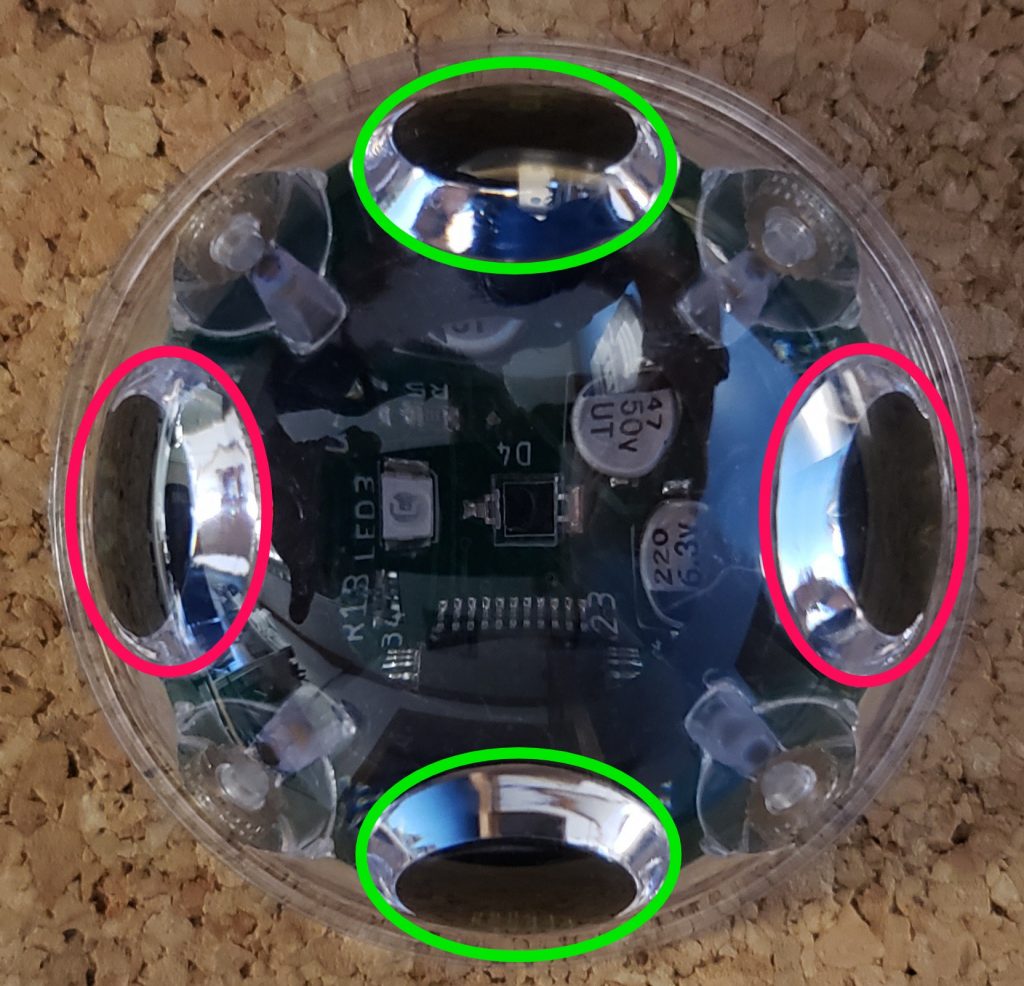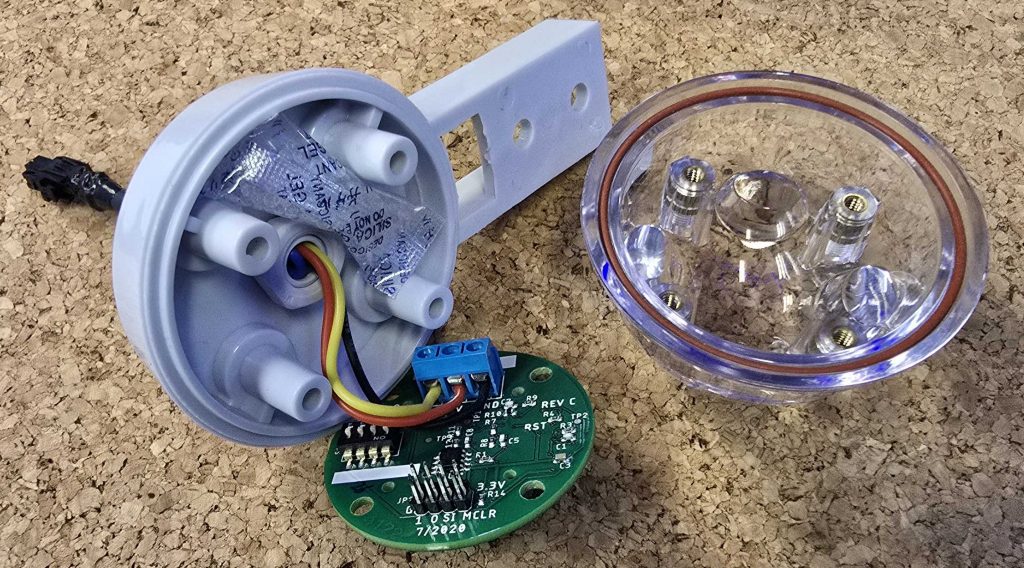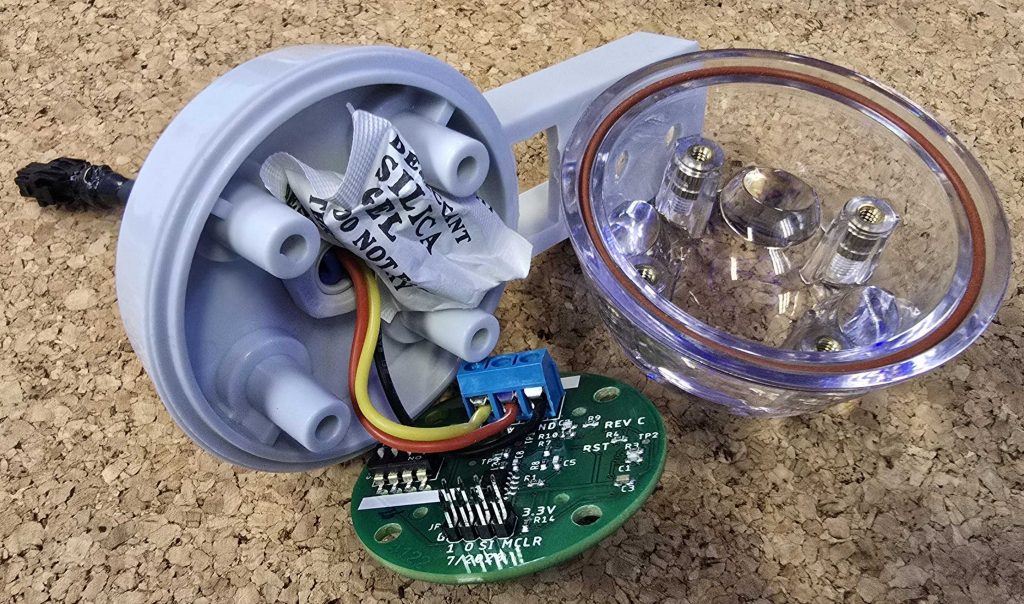Please note that many questions are also answered in our RG-11 Instruction Guide.
Electrical
There is a discrepancy between the documentation on the Input voltage specification on the packaging or insert and the website. Which one is right?
Rest easy, the RG-11 input voltage specifications have not changed from when we introduced the unit more than a decade ago, nor has the input circuit changed.
The RG-11 is fine with 24VAC or DC. Due to an internal misunderstanding some time ago, the wide range of input voltages was restricted. We cleared that up and these specifications are close to the original. Refer to the instruction guide for the latest information, replicated below:

Can I use the 5V pin on the header of the RG-11 to power it with 5V?
Unfortunately, No. The RG-11 will not be able to boost its emitter current with just 5 volts. Please power the device with the minimum required 12V through the main terminal block.
What kind of output does it have?
The output is relay interface, with Common (COM), Normally Open (NO) and Normally Closed (NC) connections.
My application is solar powered. Can I use the RG-11 Rain Sensor?
Yes. The normal current drain of the RG-11 is a reasonable 15 mA with no outputs on and no heater enabled. But, the RG-11 also includes modes that enable micro-power sleep mode when no rain is detected. This drops the current consumption down to 1.5 mA for long periods of time on dry days.
Mechanical
What material is the RG-11 made of?
The lens is made of UV stabilized polycarbonate, the case is made of UV stabilized ABS, the screws are stainless steel and the O-ring is silicone.
The O-ring doesn’t fit properly, it’s seems to be too small.
Try stretching it a before putting it into the groove. This will help to expand the o-ring for a bit while you assemble the RG-11 Rain Gauge. It is best to stretch it enough so it becomes “too big” to fit in the groove. After the Rain Sensor has been in operation and assembled for some time, the o-ring tends to stay in place when the RG-11 is disassembled. But if it falls out again, just stretch the o-ring before assembly.
What is the IP rating (waterproofing) for the RG’s?
The IP rating of the sensor is a bit tricky. The unit should easily reach IP55 using general careful assembly techniques. The O-ring must be properly seated. The unit can function without, but the silicone rubber gasket is hydrophobic and minimizes/eliminates possible capillary action.
If the cable gland is tightly closed around the properly sized round cable, the rating can be IP66. Since we do not control the final connections, it is difficult to definitively show any rating.
Some of our customers fabricate their own housing to mate with the lens. In that case, there may be no cable gland to get in the way and you should easily get an IP67 rating… we have quite a few on yachts for their windshield wiper control systems.
What is the small bag in the RG sensor and what is the proper way to assemble the sensor?
The small bag is a silica gel pack and is an integral component for moisture management in the RG sensor. The sensor is properly sealed when the O-ring is properly placed, the cable gland is well clamped on the round jacketed multiple conductor cable exiting the housing and is tightened with the stainless steel screws. Tighten the screws using the torque adjusted screwdriver or equivalent to 1.1 Nm (0.8 lb-ft). This is light “hand tight” using a screwdriver.
The 2g silica gel pack is placed in the sealed and enclosed space. It is very effective as it is oversized for the enclosed space. It reduces the internal moisture well below the dew point so no condensation can be formed on the inside surface of the lens, which could trigger false positives.
There are two styles of silica gel pack, below shows how each of them should be placed. You want to be careful to not rupture the package by keeping it away from the 4 bosses where the screws go and the PC Board is retained. Also, stay away from the O-ring and the matching housing perimeter. This will also break the sensor seal.
Additionally, the PC Board is conformal coated, so should not be affected by residual moisture.
Operational
Is there a way to test the RG-11 without waiting for it to rain or spray it with a hose or a squirt bottle?
Yes! Set the DIP switches to Mode 1: It’s Raining, very sensitive and power the unit. Swipe your finger across one or more of the sensing areas (the emitter/sensor pairs are shown in Red and Green) to simulate rain. Generally, you want a sensitive setting to keep from wearing out your finger in the process. The RG-11 will trigger the green LED for a visible indicator and the relay will activate. They will remain activated until the decay time passes the threshold and the unit resets.

I want to know how much rain has fallen in specific period of time. Will the RG-11 Rain Sensor easily do this for me?
Unfortunately, the RG-11 does not come with a readout, so it will not easily give the amount of rain fall over a time. The Rain Gauge has an output that “pulses” when a certain rain event — set by the specific modes — has occurred. It is up to the purchaser to interpret the data as they see fit.
We have received many calls and inquiries from farmers wanting a simple, maintenance free rain gauge that gives an easy to interpret readout. We have concluded that this is not the product the farmers are looking for. The RG-11, in it’s current form, is mainly for system designers to design into other products. Plus, the RG-11 is not wireless, which seems to be what the farmers really want.
What is the accuracy of the RG-11 Rain Gauge?
The Hydreon Rain Gauge is not as accurate as a properly maintained Tipping Bucket in ideal conditions.
We do not claim an accuracy specification for the RG-11 Rain Gauge. The RG-11 is very repeatable, and over a variety of conditions will yield an average result that is reasonably close to that of a tipping bucket. But, for any given rainstorm the result can be off by as much as 2:1 in either direction. Even this is not an upper limit.
The strength of the RG-11 is that it works in many situations where a tipping bucket simply does not. That is, the Rain Sensor is vastly more accurate than a tipping bucket that has ceased to work properly due to dirt or mineral deposit or mechanical difficulty, or a tipping bucket in a mobile application that is constantly giving false indications due to motion. The RG-11 is more accurate for a small (but in some applications, meaningful) amount of rain, such as 0.01″, that will simply not register in a tipping bucket.
This said, if you do not need the ruggedness of the Hydreon Rain Gauge, and maintaining the tipping bucket is not a problem, use a tipping bucket.
Does the RG-11 Rain Sensor work in direct sunlight?
Yes. The RG-11 rejects the effects of sunlight using optics, filtering circuitry and software. Normal fixed installations will be completely unaffected by sunlight.
The RG-11 Rain Sensor can be, however, affected by extremely bright, very rapidly changing sharp shadows. Such shadows are generated, for example, by placing the RG-11 on a moving vehicle and driving it under overhanging trees at, say 30 MPH. The effect is to decrease the sensitivity. The RG-11 compensates for this decrease in sensitivity in software, and the output of the Rain Gauge is largely unaffected.
Does the RG-11 Rain Gauge sense Condensation in Tipping Bucket and other modes?
Generally, the RG-11 will sense condensation as if it were rainfall. The internal heater will aid slightly in preventing condensation. Condensation, however, seldom amounts to a significant accumulation of water.
Does the RG-11 Rain Sensor still work when it is covered with water?
Yes. The Rain Sensor is looking for changes in the surface. This can be a drop landing on one of the target regions, or rolling off one of the target regions. When the Rain Sensor surface is covered with water, additional water will continue to change the properties of the surface. Some raindrops will cause an increase in transmittance of the beams. Other raindrops will knock-off an existing water droplet, and cause a decrease. The software properly detects all such changes.
Does the RG-11 measure the size of the impinging rain drops?
Yes. Large drops that are a direct hit on one of the four target regions are weighted more heavily in the algorithms than are small. Direct hits count more than drops on the edge of the regions. Other drops land on the top of the Rain Gauge before coalescing and running over a target region. All of these events are statistically averaged to form a reasonably accurate result.
Other
Why no phone number for technical support?
We have found that most of our communication is with highly skilled embedded systems engineers. They require finely detailed responses with documentation and support as they seek to get our sensors working optimally in their system. We have found that nearly all the hobbyists fall into the same category.
That is why we use email exclusively. We seek to minimize miscommunication.
Can I contact you if I have more questions?
Of Course! Email us at info@hydreon.com.


